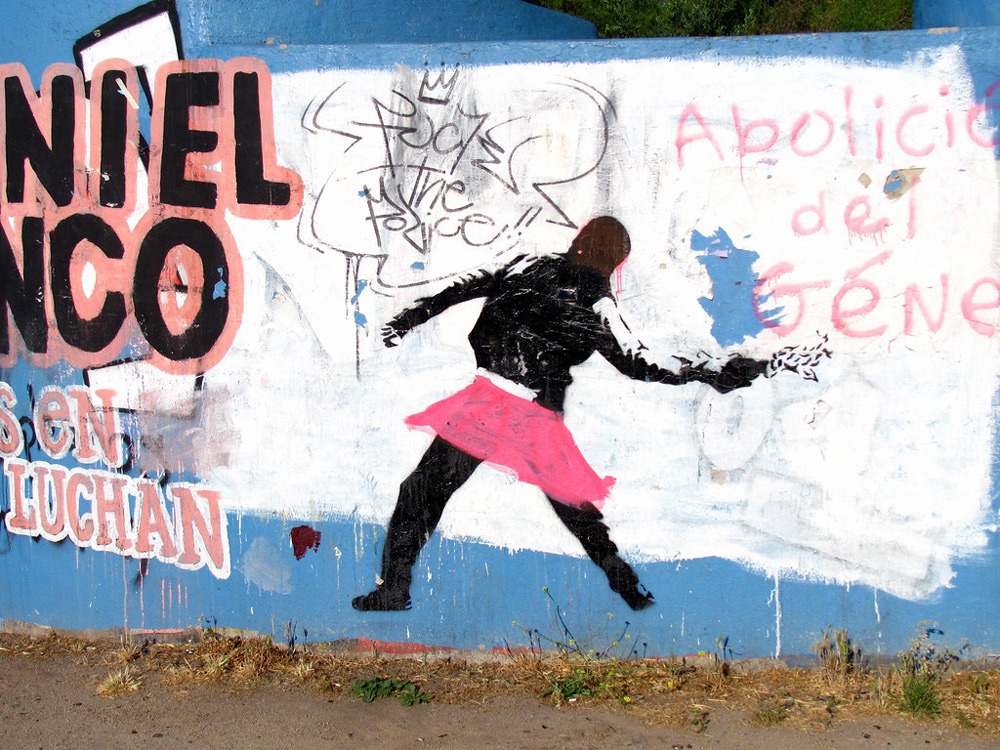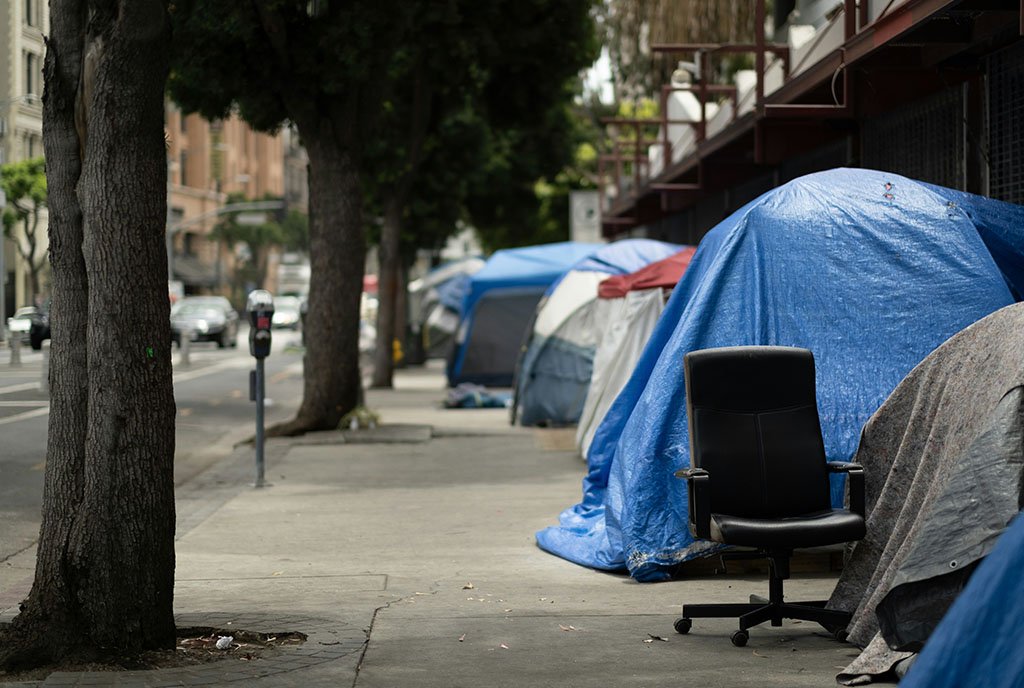
Police and prison abolition. Feminism. What do these two movements have to do with one another in organizing for a more just world?
At a Marguerite Casey Foundation (MCF) and Seattle Arts & Lectures book club event to discuss the politics and practice of abolition feminism last April, four scholar-activists—Professors Angela Davis, Gina Dent, Erica R. Meiners, and Beth E. Richie—discussed how their book, Abolition. Feminism. Now., responds to this question.
In conversation with MCF’s president, Dr. Carmen Rojas, and as part of the MCF Book Club’s Reading for a Liberated Future series, the authors unpacked how queer, anti-capitalist, global, grassroots, and women of color-led feminist movements have contributed to a vibrant twenty-first century movement for racial, gender, and economic justice. Through this genealogy, their work provides an important reframing: While abolition and feminism are often presented as two, separate—and for some, incompatible—movements, contemporary grassroots abolitionist feminist organizing embodies an urgent and necessary political project of imagining and creating a thriving future for all.
But what, exactly, is abolition feminism?
Defining Abolition Feminism
Abolition feminism (sometimes termed “abolitionist feminism”) was once called “anti-carceral feminism,” a term that emphasizes its relation to what it isn’t: carceral feminism, a strand of white, liberal-bourgeois feminism that emerged out of the mainstream women’s liberation movement and developed in the late twentieth and early twenty-first centuries.
Carceral feminism turns to the state to adjudicate and address gender-based violence by punishing individual perpetrators of intimate partner violence, child abuse, sexual harassment and violence, hate crimes, and other forms of violence. In doing so, it ignores the systemic injustices that contribute to these forms and cycles of violence. Carceral feminism misses the forest for the trees, seeing only interpersonal harm and misogyny while overlooking state violence and racism, as well as other forms of injustice—or, at best, promising future reform.
In contrast, abolition feminism takes an intersectional and structural approach to analyzing and dismantling systems of oppression. The movement comes out of the lived experiences of radical women of color, their scholarship, and through their activism, the cross-fertilization of over a century and a half of movements for justice.
Proponents of abolition feminism understand that the state’s criminal legal system works as it was designed: to maintain a racist, patriarchal, and capitalist order of social control through violence. These feminists seek to abolish the police and prison-industrial complex (PPIC), a set of “overlapping interests of government and industry that use surveillance, policing, and imprisonment as solutions to economic, social, and political problems” like poverty, homelessness, substance abuse, and mental illness, to name a few. The PPIC, they argue, exacerbates the very problems it claims to solve.
Instead, abolition feminism contends that interpersonal and structural violence must be addressed together by combining critical analysis with praxis for social transformation, rather than punishment for social control. In the words of Critical Resistance, the first national organization for PPIC abolition co-founded in 1997 by Davis with Prof. Ruth Wilson Gilmore and Rose Braz, it’s a “broad strategy” to “build models today that can represent how we want to live in the future” (emphasis in original).
The Politics of Abolition Feminism
Davis, Dent, Meiners, and Richie said they were called by “the current political moment” to write Abolition. Feminism. Now. As discussions of systemic racism and calls to defund the police gained traction during the coronavirus pandemic and the 2020 uprisings for racial justice, a burgeoning interest in abolition among a new generation of activists prompted the authors to reflect on the movement’s past and present. The result is a “movement genealogy” of abolition feminism’s varied political lineages and a call to action that uplifts current abolitionist feminist organizing.
Abolition. Feminism. Now. was officially released, however, during a backlash to calls for abolition. Liberal politicians have joined conservative reactionaries in declaring that the movement to #DefundPolice is dead, with President Biden arguing in his 2022 State of the Union address, “The answer is not to defund the police. The answer is to fund the police with the resources and training they need to protect our communities.”
How can abolition feminism respond to this bipartisan backlash? Meiners reminded the audience not to take the “rising crime” narrative at face value. While recognizing that there are harms, she noted that the numbers and the facts—that is, what is happening—are being debated. By taking a longer view of the movement, the authors show how an emerging politics of abolition feminism creatively responds to these changing tides.
A Movement Genealogy
Rojas asked the panel, “Why was it important to you all to show this long history, to do a genealogical arc of Black freedom struggle and abolition feminism?” Dent clarified what it meant for the authors to write a “genealogical” history: It is about “looking at the present in a complicated way” by connecting it to “the organizations, habits, practices, and ways of being that create a robust sense of history and contest the past we’ve been given.”
Abolitionist and feminist movements have a complicated and intertwined history in the United States—as when anti-slavery abolitionists excluded women from speaking, or suffragists fought for the vote for white women only—and on the left, the received history is one of divided movements.
Despite these tensions, Black women—from Sojourner Truth to Ida B. Wells, to Audre Lorde, to the Combahee River Collective, and beyond—have been key architects of abolitionist and feminist movements. They’ve urged other feminists to think critically about the intersections of race with gender, class, and other forms of social difference. As Lorde wrote in her Open Letter to Mary Daly, “beyond sisterhood is still racism,” and ignoring differences among women furthers the oppression of all when women use “the many varied tools of patriarchy” against each other.
In the decades since, feminists of color have continued to make this fundamental point: Asserting a form of “color-blind” racial liberalism by positioning the concerns of class-privileged white women as the concerns of all women upholds racist structures and outcomes.
It also reveals an oblivious disregard for the impacts of policing, incarceration, and other forms of structural violence on Black and Brown families, as exemplified by white liberal feminists’ “tough on crime” stance in the 1990s. Hilary Rodham Clinton, the National Organization of Women, and anti-domestic violence groups all supported increased police funding, punitive sentencing laws, and other measures in the 1994 Violence Against Women Act, driving what legal scholar and Michelle Alexander famously termed, the new Jim Crow of mass incarceration.
Sign up for our free newsletters
Subscribe to NPQ's newsletters to have our top stories delivered directly to your inbox.
By signing up, you agree to our privacy policy and terms of use, and to receive messages from NPQ and our partners.
While discussing this “arc of missteps,” as Rojas dubbed it, and the resulting policy morass, the authors took a longer view of carceral feminism’s genealogical relation to slavery and the backlash to Reconstruction after the Civil War. “What we’re calling ‘carceral feminism’ did not simply emerge in the 1990s,” said Davis, “and in fact, if we think back to the era following slavery and the rise of lynching, it was because of the assumption that white women’s safety was at stake; [there was] an enormous racist effort to present Black men as potential rapists of white women.” Through such a genealogy, Davis also noted critical efforts to disrupt gendered anti-Black narratives—like that of white civil rights activist, Anne Braden, who tried to persuade other Southern white women that lynching would not prevent sexual violence.
Still, the late 20th century was a critical time for a carceral political economy: The authors trace the growth of a punishment industry deeply ensconced in late global capitalism, and the retreating welfare state and criminalization of poverty that accompanied it. At MCF’s book club, they spoke about the limits of “glass-ceiling feminism”—a term Davis coined for a form of feminism that prioritizes privileged women’s career advancement—noting that a focus on corporate boards and leadership benefits women at the top, but not those at the bottom of the racial and socioeconomic order.
Richie recalled how Black women activists were sidelined in the 1990s when they said, “We cannot expect that carceral systems will keep us safe,” and went a step further: “A gender-essential, white supremist feminism doesn’t just lose the details of what’s important to other women’s lives—it actually endangers them.” In other words, by ignoring the root causes of violence and aligning with powerful interests, carceral feminists enabled the PPIC to supplant other forms of safety and care like education and health care.
Envisioning the World We Want
Rather than being an “ideal” only possible in some distant future, the authors emphasized that an abolition feminist vision must animate today’s social movements. As Davis said in a June 2020 interview with Democracy Now, “Abolishing police is not just about dismantling. It’s also about building up.”
This means asking radical questions to envision the new society to be built: How do we create a world that isn’t governed by domination and punishment—that doesn’t rely on state violence? Who’s working on this now? How are they organizing to build healthier systems, institutions, and interpersonal relationships?
Meiners said, “The question of what we should invest in, what we should build, is a radically important one, and feminists have been engaging this question about praxis—about practice shaped by theory and practice—for centuries. So, I think it’s really important to emphasize the building nature of abolition, and not simply what we want to dismantle or change.” She mentioned a slogan from a past Critical Resistance conference that she uses to remind herself to use a multifaceted approach to abolition: Dismantle, change, and build.
The world that abolition feminists want to build is one in which people’s everyday needs are met with mutual care. It’s world that recognizes our interdependence, where economic resources are shared, sustenance is assured, work is meaningful, and universal health care and housing are human rights guaranteed for all. It’s a world of learning, creativity, and joy.
The Practice of Abolition Feminism
While arguing that “vision and practice are not contradictory but are rather inseparable, the insistent prefiguration of the world we know we need” (p. 15), Davis, Dent, Meiners, and Richie celebrate how grassroots activists are already creating this world. They turned to community-based organizing projects in their networks “to represent them as ethically and politically, and responsibly, as we could.”
Their perspective, however, remains internationalist because, as Richie said, “the US is an exporter of the PPIC” and “we can learn from international struggles for freedom and how others are doing abolition.” Meiners underscored that second point, noting how the authors were excited to learn how a collective in India is developing responses to sexual and gender violence without police.
In the United Kingdom, the Sisters Uncut network formed in response to government cuts. They used a range of actions—including direct action, political education, and base building—to name austerity as what marks women and other communities as “vulnerable” to violence, and to push back on policing and incarceration as responses to that violence.
The authors also looked closer to home. Chicago, where Meiners and Richie are based, has a strong network of radical collectives and projects: Project NIA, Survived & Punished, Young Women’s Empowerment Project, a chapter of INCITE!, the national network of radical antiviolence feminists of color that Richie cofounded, Transformative Justice Law Project, and more. Meiners spoke of activists’ skillshares on transformative justice and resources created to encourage community members to turn to alternatives to policing, including workshops and checklists. This includes the work of groups like Creative Interventions and The Storytelling and Organizing Project in coordinating study groups and developing “safety labs”—workshops to practice how to interrupt and intervene in harmful situations and support those impacted without calling the police—based on listening to community testimonies and analyzing them to develop safer practices.
Writing as Organizing
As Rojas observed, Abolition. Feminism. Now. is written in an engaging style accessible to people with various educational and lived experiences. The book concludes with its initial provocation: “abolition is unthinkable without feminism and our feminism is unthinkable without abolition” (p. 168), echoing the title of another recent conference, Abolition Is Feminism, Feminism Is Abolition.
Abolition feminism is an unfinished project, however, and the book recognizes this by providing additional stories, toolkits, and other resources in its appendices, as Rojas noted, “to move readers from thinking to acting.”
For the authors, writing the book was itself a practice of abolition feminism. Their process embodied the movement’s values of intersectional praxis, collectivism, and care. The scholar-activists met every week for a year and four months over Zoom to discuss what was happening in the world and their experiences in the movement, said Dent, noting that the process wasn’t always a smooth one. “It’s important to say this because I think it’s a metaphor for the struggle.”
Dent continued, “If it sounds like one voice, at times, that’s an incredible achievement—[letting go of] expectations, letting go of possessiveness of language, unlearning some of our scholarly inclinations and diving into movement inclinations.” Becoming part of a collective meant documenting the work of grassroots organizers who embodied the movement by their example, rather than citing a litany of better-known names and organizations.
“This kind of engagement with each other—and with the others we are surrounded by, whether we know it or not—is at the root of our feminism.”












